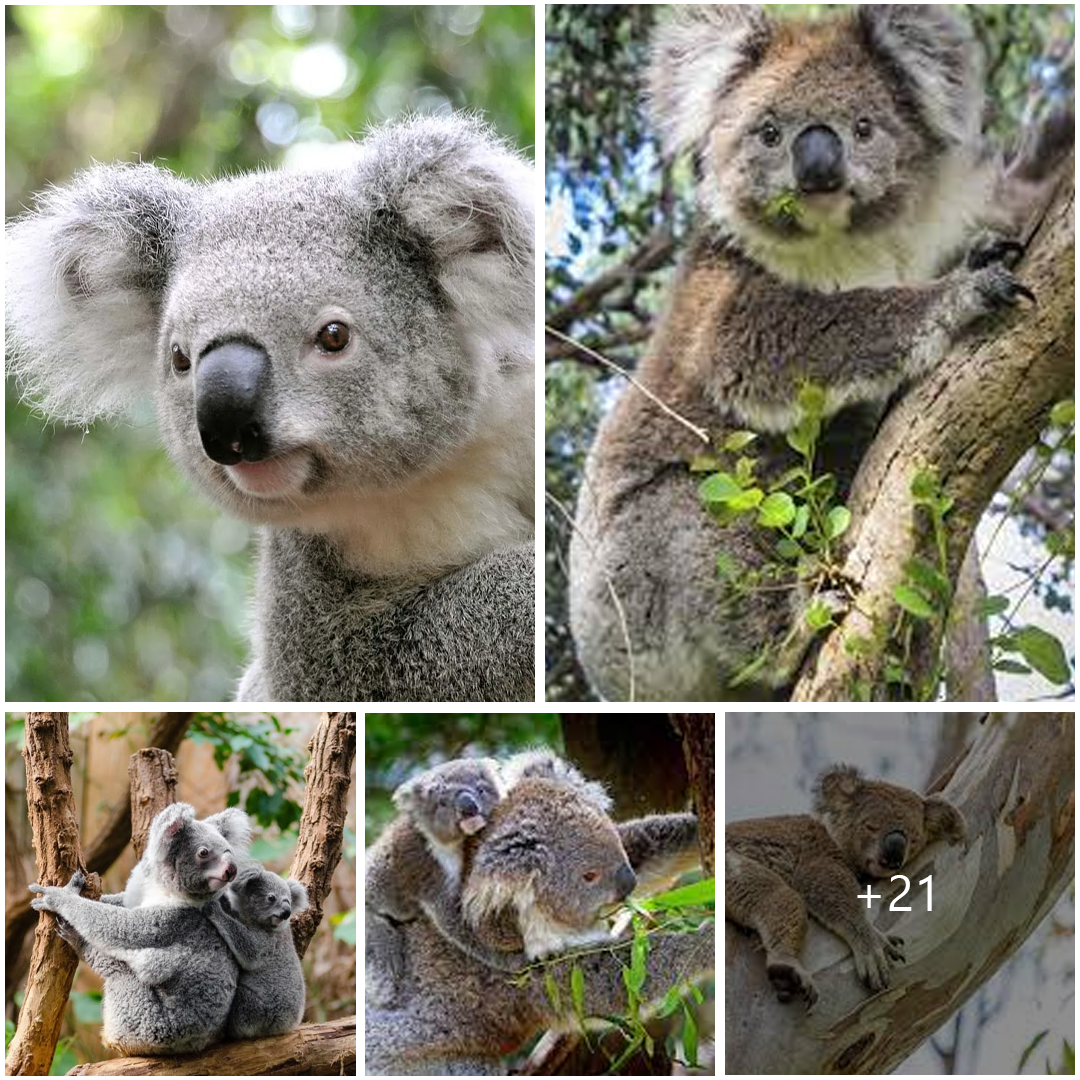
Exploring the Enigmatic Koala: Australia’s Iconic Marsupial
The koala, often referred to as the “koala bear” despite not being a bear at all, is one of Australia’s most beloved and iconic animals. With its fluffy ears, button nose, and endearing demeanor, the koala holds a special place in the hearts of people around the world. Let’s delve into the fascinating world of this unique marsupial.
Habitat and Distribution
Koalas are native to Australia and are primarily found in the eastern and southeastern regions of the country, inhabiting eucalypt forests and woodlands. These arboreal marsupials are well adapted to life in trees, spending most of their time lounging in the branches of their favorite food source, eucalyptus trees.
Physical Characteristics
Koalas are small, tree-dwelling marsupials with a distinctive appearance. They have dense, woolly fur that varies in color from gray to brown, with white patches on their chest and belly. Their large, fluffy ears provide excellent hearing, while their prominent, round eyes are adapted for low light conditions, allowing them to be most active at night.
One of the koala’s most remarkable features is its specialized diet of eucalyptus leaves. With a highly specialized digestive system, koalas can efficiently metabolize the toxins found in eucalyptus leaves, which are toxic to many other animals.
Behavior and Lifestyle
Koalas are solitary animals, typically only coming together to mate. They are sedentary by nature, spending up to 20 hours a day sleeping or resting in the safety of the treetops. When they are not sleeping, koalas feed on eucalyptus leaves, which provide the majority of their moisture and nutrients.
Despite their docile appearance, koalas can be quite territorial, especially males during the breeding season. They communicate with each other through vocalizations, scent marking, and body language, using low-pitched grunts, bellows, and snorts to establish their territory and communicate with potential mates.
Conservation Status and Threats
While koalas are not currently classified as endangered, they face several threats to their survival, including habitat loss, disease, and climate change. Deforestation, urbanization, and land clearing for agriculture have resulted in the loss of eucalypt forests, reducing the available habitat for koalas.
In recent years, koalas have also been severely impacted by bushfires, which have ravaged large areas of their habitat and caused significant loss of life. Climate change is exacerbating these threats by altering weather patterns and increasing the frequency and intensity of wildfires.
Conservation Efforts
Efforts to conserve koala populations include habitat protection, reforestation projects, and wildlife corridors to connect fragmented habitats. Conservation organizations and government agencies are also working to address the underlying causes of habitat loss and mitigate the impacts of climate change on koala populations.
Community education and public awareness campaigns play a crucial role in raising awareness about the plight of koalas and encouraging individuals to take action to protect their habitat and ensure their long-term survival.
Conclusion
In conclusion, the koala is a beloved and iconic symbol of Australia’s unique wildlife. With its adorable appearance, specialized diet, and relaxed lifestyle, the koala captivates the hearts of people around the world. However, urgent action is needed to address the threats facing koala populations and ensure their continued survival in the wild. By working together to protect their habitat and address the root causes of their decline, we can help secure a brighter future for this beloved marsupial.





